World Technology Award
The World Technology Awards are presented annually by the World Technology Network (The WTN) at its World Technology Summit to individuals and corporations achieving significant, lasting progress in categories pertaining to science, technology, the arts, and design. The first World Technology Summit and Awards took place on November 12, 1999, at the National Museum of Science and Industry in London, England. Currently, the World Technology Summit is held at the Time-Life Building, and the World Technology Awards are presented at the United Nations headquarters in New York City The Awards are given in association with Time, NASDAQ, Fortune, AAAS, Science, NYAS, and The Technology Review.
History
The WTN was founded by its current chairman, James P. Clark.[1] The first set of 20 awards was presented in 2000. The 2001 World Technology Summit was held in London at Imperial College of Science, Technology, and Medicine and the National Museum of Science & Industry. The 2002 World Technology Summit was held in New York City, in part at United Nations headquarters. The 2003, 2004, 2005 and 2006 World Technology Summit & Awards took place in San Francisco, with the Summits at leading hotels and the Awards ceremony at San Francisco City Hall.[2][3]In 2002, the WTN added a Corporate (designated by "Corp", below) award to 10 of the categories. These categories are listed separately. In 2001, the WTN added three categories: Education, Entertainment, and Social Entrepreneurship. In 2002, WTN discontinued three categories: Commerce, Transportation and Start-up Companies.
The X Prize Foundation and WTN announced the WTN X Prize in October 2004.[4]
Biotechnology
- 2000 : John Sulston, Director, Sanger Centre
- 2001 : Dr. Craig Venter, President & CEO, Celera Genomics, Inc.
- 2002 : Dr. Ruedi Aebersold, Professor, Institute for Systems Biology
- Corp : Genecor International
- 2003 : Dr. Leroy Hood, Institute for Systems Biology
- Corp : International Rice Genome Sequencing Project
- 2004 : Prof. Ehud Shapiro, Department of Computer Science, Weizmann Institute
- Corp : Advanced Cell Technology
- 2005 : Nadrian Seeman, New York University
- Corp : Amyris Biotechnologies
- 2006 : Paul Rothemund
- Corp : Genentech
- 2009 : Christina Smolke and Maung Nyan Win, Stanford University
- Corp : T2 Biosystems
- 2011 : James J. Collins, Professor of Biomedical Engineering, Howard Hughes Medical Institute and Boston University
- Corp : Celgene Corporation
Commerce
- 2000 : Steven Snyder, Brad Miller & John Riedl, Cofounders, Net Perceptions
- 2001 : Linus Torvalds, Programmer, Transmeta Corp.
- 2002 : Discontinued
Communication Technology
- 2000 : Tim Berners-Lee, Director, World Wide Web Consortium
- 2001 : Robert Metcalfe, Vice-President Technology, International Data Group, Inc.
- 2002 : Linus Torvalds, Creator, Linux
- Corp : NTT DoCoMo, Inc.
- 2003 : Prof. Kilnam Chon, KAIST
- Corp : Quallcomm, Inc.
- 2004 : David P. Reed, Adjunct Professor, Media Arts and Sciences, Massachusetts Institute of Technology, & HP Fellow, HP Laboratories
- Corp : Skype
- 2005 : Bill St. Arnaud, CANARIE, Inc.
- Corp : Wikimedia Foundation Inc.
- 2006 : Craig Newmark
- Corp : FON
- 2009 : Jianping Wu and Xing Li, China Education and Research Network (CERNET)
- Corp : YouTube
- 2011 : Gabriel Chalet, Researcher, Bell Labs, Alcatel-Lucent
- Corp : Skype
Design
- 2000 : Jonathan Ive, Vice-President of Industrial Design, Apple Computer
- 2001 : Stefano Marzano, CEO, Philips Design
- 2002 : Jonathan Ive, Vice-President of Industrial Design, Apple Computer
- 2003 : Issey Miyake & Dai Fujiwara, Miyake Design Studio
- 2004 : Paola Antonelli, Curator, Department of Architecture and Design, The Museum of Modern Art
- 2005 : Ross Lovegrove, Lovegrove Design Studio
- 2006 : Bill Moggridge
- 2009 : Ron Nabarro, Senior-Touch ltd.
- 2011 : Alexandra Daisy Ginsberg, Designer/Artist/Writer
Education
- 2001 : Dr. Venkataraman Balaji, Principal Scientist, ICRISAT
- 2002 : Dr. Pedro Hepp, Professor, Universidad de La Frontera
- 2003 : Dr. Robert F. Tinker, The Concord Consortium
- 2004 : Cristian Cox, Minister of Education, Government of Chile
- 2006 : James Slotta
- 2009 : Dr. Richard G. Baraniuk, Rice University
- 2011 : Dr. Mitchel Resnick, LEGO Papert Professor of Learning Research and Head of the Lifelong Kindergarten Group, MIT Media Lab
Energy
- 2000 : Dr. Geoffrey Ballard, Founder, Ballard Power Systems
- 2001 : Dr. Paul MacCready, Chairperson, AeroVironment, Inc.
- 2002 : Dr. Ashok Gadgil, Senior Staff Scientist, Lawrence Berkeley National Laboratory
- Corp : Toyota
- 2003 : Prof. Zhiqiang Yin, Tsinghua University
- Corp : Environ, Energy Technologies Division, Lawrence Berkeley National Laboratory
- 2004 : Martin Green, Research Director, Centre for Advanced Silicon Photovoltaics and Photonics, University of New South Wales
- Corp : AeroVironment, Inc.
- 2005 : Subhendu Guha, United Solar Ovonic
- Corp : XsunX, Inc.
- 2006 : Stuart Wenham
- Corp : CSG Solar
- 2009 : Zhengrong Shi, Suntech Power Holdings Co., Ltd.
- Corp : Planar Energy Devices
- 2011 : Xin Zhao, Materials Scientist, Thomas Jefferson National Accelerator Facility (Jefferson Laboratory) & Rod Ruoff/Meryl Stoller, Ruoff Research Group, University of Texas at Austin
- Corp : Aquion Energy
Entertainment
- 2001 : Shawn Fanning, Founder, Napster, Inc.
- 2002 : Michael Robertson, CEO, Lindows.com
- 2003 : Derek Sivers, CD Baby
- 2004 : Richard Marks, Manager, Special Projects Group, US R&D, Sony Computer Entertainment
- 2006 : Chad Hurley and Steve Chen
- 2009 : Eric Chan, ECCO Design Inc
- 2011 : Kati London, Director of Product, Zynga
Start-up Companies
- 2000 : Christopher Evans (businessman), Chairperson, Merlin Ventures
- 2001 : Shawn Fanning, Founder, Napster, Inc.
- 2002 : Discontinued
Environment
- 2000 : Amory Lovins, Co-founder, Director of Research, Rocky Mountain Institute
- 2001 : Dr. Geoffrey Ballard, Founder, Ballard Power Systems, Inc.
- 2002 : Francis E. K. Britton, M.D., EcoPlan International
- Corp : All Species Foundation
- 2003 : Prof. R. Malcolm Brown, University of Texas at Austin
- Corp : Hypercar, Inc.
- 2004 : Ken Livingstone, Mayor, London
- Corp : AgraQuest
- 2005 : Priyadarshini Karve, Appropriate Rural Technology Institute
- Corp : City of Seoul, Republic of Korea (Office of the Mayor)
- 2006 : Inez Fung
- Corp : Woods Hole Oceanographic Institution and Scripps Institution of Oceanography
- 2009 : Greg Allgood, Procter & Gamble
- Corp : Honda Motor Company
- 2011 : Ann Hand, CEO, Project Frog
- Corp : Airdye Solutions
Ethics
- 2000 : Daniel Callahan, Cofounder, Hastings Center
- 2001 : Dr. Sharon Beder, Department of Science and Technology Studies, University of Wollongong
- 2002 : Prof. Ren Zong Qiu, Chinese Academy of Social Sciences
- 2003 : Peter Singer, Princeton University
- 2004 : Kristin Shrader-Frechette, O'Neill Family Professor of Philosophy/Concurrent Professor of Biological Sciences, University of Notre Dame
- 2006 : Carl Mitcham
- 2009 : Jeroen van den Hoven, Delft University of Technology
- 2011 : Paul Root Wolpe, Asa Griggs Candler Professor of Bioethics, Director, Center for Ethics, Emory University
Finance
- 2000 : Masayoshi Son, Chairperson, Softbank
- 2001 : Thomas Weisel, Founder and Chairperson, Thomas Weisel Partners
- 2002 : William Hambrecht, Founder, Chairperson & CEO, WR Hambrecht + Co
- Corp : Battery Ventures
- 2003 : Prof. Muhammad Yunus, Grameen Bank
- Corp : Intel Capital
- 2004 : Steve Jurvetson, Managing Director, Draper Fisher Jurvetson
- Corp : General Atlantic Partners
- 2005 : Richard Kramlich, New Enterprise Associates
- Corp : Kleiner Perkins Caufield & Byers
- 2006 : Erik Straser
- Corp : Silicon Valley Bank
- 2009 : Ram Shriram, Sherpalo
- Corp : Intel Capital
- 2011 : Esther Dyson, CEO, EDventure Holdings
- Corp : Band of Angels
Health & Medicine
- 2000 : Roy Bakay, Professor, Emory School of Medicine & Philip Kennedy, CEO, Founder and Chief Scientist, Neural Signals, Inc.
- 2001 : Prof. Robert Johnston, Assoc. Prof. Dept. of Microbiology and Immunology, University of North Carolina at Chapel Hill
- 2002 : Dr. James Thompson, Professor, University of Wisconsin–Madison
- Corp : Advanced Tissue Sciences
- 2003 : Prof. Jean-Laurent Casanova, Necker Medical School and INSERM U550
- Corp : Weizmann Institute of Science
- 2004 : Alan Chow & Vincent Chow, Cofounders, Optobionics Corporation
- Corp : Intuitive Surgical
- 2005 : Andreas Lendlein and Robert Langer, Massachusetts Institute of Technology
- Corp : National Institute for Biological Standards and Control/UK Stem Cell Bank
- 2006 : Hunter Peckham
- Corp : BodyMedia, Inc
- 2009 : Prof. Chris Toumazou, Director & Chief Scientist of the Institute of Biomedical Engineering, Imperial College London
- Corp : Mayo Clinic
- 2011 : Anthony Atala, Director, Wake Forest Institute for Regenerative Medicine, Wake Forest Baptist Medical Center
- Corp : Second Sight Medical Products
Information Technology - Hardware
- 2000 : Jeff Hawkins & Donna Dubinsky, Co-creators, Palm Computer
- 2001 : Gordon Moore, Chairman Emeritus, Intel Corp.
- 2002 : Prof. Shuji Nakamura, University of California, Santa Barbara
- Corp : Research In Motion, Ltd.
- 2003 : Ted Clark, Hewlett-Packard
- Corp : Apple Computer
- 2004 : Charles Black & Kathryn Guarini, Physical Sciences Department/Silicon Technology Department, T. J. Watson Research Center, IBM
- Corp : Apple Computer
- 2005 : Holly Gates, E Ink Corporation
- Corp : University of Tsukuba / Cyberdyne Inc.
- 2006 : Calvin Quate, Gerd Carl Binnig and Christoph Gerber
- Corp : Palm
- 2009 : David Flynn, Fusion-io
- Corp : AMAZON
- 2011 : Steve Teig, President & CTO, Tabula, Inc.
- Corp : Apple
Information Technology - Software
- 2000 : Paul Gauthier, Chief Technology Officer, Inktomi
- 2001 : Prof. Olivier Faugeras, Research Director, ROBOTVIS Group Sophia-Antipolis Research Unit, INRIA
- 2002 : Ray Ozzie, Chairman & CEO, Groove Networks
- Corp : Apple Computer
- 2003 : Larry Page & Sergey Brin, Google
- Corp : Sony Corporation
- 2004 : Daphne Koller, Associate Professor, Robotics Laboratory, Computer Science Department, Stanford University
- Corp : Apple Computer
- 2005 : David Haussler, Howard Hughes Medical Institute/University of California, Santa Cruz
- Corp : Amazon.com
- 2006 : Sebastian Thrun
- Corp : Google
- 2009 : Dawn Jutla, Professor, Sobey School of Business, Halifax, Canada
- Corp : Facebook
- 2011 : Otavio Good, Founder & CEO, Quest Visual, Inc.
- Corp : Amazon.com, Inc.
Law
- 2000 : Nobuhiro Nakayama, Professor of Law, University of Tokyo
- 2001 : Prof. Lawrence Lessig, Professor of Law, Stanford University
- 2002 : Marc Rotenberg, Executive Director, EPIC
- 2003 : Prof. James Boyle, School of Law, Duke University
- 2004 : Pamela Samuelson, Director, Berkeley Center for Law & Technology, Boalt Hall School of Law, University of California, Berkeley
- 2006 : Jerry Kang
- 2009 : Lawrence Lessig, Stanford Law School
- 2011 : Arti K. Rai, Elvin R. Latty Professor of Law, Duke University
Marketing Communications
- 2000 : Steve Case, Chairperson/CEO, America Online
- 2001 : Mark Viken Sr., Vice-President, Information Technology Products Division, Sony Electronics, Inc.
- 2002 : Zhang Ruimin, Founder & CEO, Haier
- 2003 : Larry Page & Sergey Brin, Google
- 2004 : Cindy McCaffrey, Vice-President, Corporate Marketing, Google
- 2006 : Saul Klein[disambiguation needed]
- 2009 : Mark Zuckerberg, Facebook
- 2011 : Aedhmar Hynes, CEO, Text 100 Public Relations
Materials
- 2000 : Frederick Seitz, President Emeritus, Rockefeller University
- 2001 : Prof. George M. Whitesides, Professor of Bioorganic/Physical Organic Chemistry & Materials Science, Department of Chemistry and Chemical Biology, Harvard University
- 2002 : Dr. Angela Belcher, University of Texas at Austin & Massachusetts Institute of Technology
- Corp : IBM Corporation
- 2003 : Prof. Charles Lieber, Harvard University
- Corp : Dow Chemical Company
- 2004 : Prof. Charles Lieber, Department of Chemistry and Chemical Biology and the Division of Engineering and Applied Sciences, Harvard University
- Corp : Nanosys
- 2005 : Daniel Rugar, John Mamin, Raffi Budakian and Benjamin Chui, IBM
- Corp : Molecular Imprints
- 2006 : Michael Graetzel
- Corp : IBM
- 2009 : Paul Chaikin, New York University
- Corp : Northwestern University
- 2011 : Andrew Barron, Welch Chair of Chemistry, Professor of Materials Science, Rice University
- Corp : 3M
Media & Journalism
- 2000 : Adam Clayton Powell III, Vice-President of Technology and Programs, The Freedom Forum
- 2001 : John Markoff, Technology Correspondent, The New York Times
- 2002 : Walter Mossberg, Personal Technology Columnist, The Wall Street Journal
- 2003 : Dr. Krishna Bharat, Google, Inc.
- 2004 : Dan Gillmor, Business and Technology Columnist, San Jose Mercury News
- 2006 : Chris Kyriakakis
- 2009 : Michael Rogers, The New York Times
- 2011 : Athar Osama, Publisher/Editor/Columnist, Muslim-Science.com
Policy
- 2000 : M. S. Swaminathan, Secretary of the Ministry of Agriculture and Co-operation, India
- 2001 : Prof. Christopher Freeman, Professor Emeritus, SPRU, University of Sussex
- 2002 : Dr. Karl Pister, Chancellor Emeritus, University of California
- 2003 : Prof. Clement Dzidonu, International Institute for Information Technology
- 2004 : Bruce Alberts, President, National Academy of Sciences
- 2006 : Al Gore
- 2009 : Paul Kagame, President, Republic of Rwanda
- 2011 : Alex Dehgan, Science and Technology Adviser to the Administrator, US Agency for International Development (US AID)
Social Entrepreneurship
- 2001 : Agus Gunarto, Managing Program/NGO Worker, Yayasan Rona Alam
- 2002 : Bunker Roy, Director, The Barefoot College
- 2003 : Rodrigo Baggio, Committee for Democracy in Information Technology
- 2004 : Fabio Luis de Oliveira Rosa, Executive Director, Institute for the Development of Natural Energy and Sustainability
- 2006 : Victoria Hale
- 2009 : Timothy Prestero, Design That Matters
- 2011 : Howard Weinstein, Social Entrepreneur, Solar Ear
Space
- 2000 : David Thompson, Founder, Orbital Sciences
- 2001 : Prof. Martin Sweeting, Director, Surrey Satellite Technology Ltd, Surrey Space Centre at the University of Surrey
- 2002 : Prof. Roger-Maurice Bonnet, Directeur General Adjoint for Science, CNES
- Corp : XM Satellite Radio
- 2003 : Dr. Peter Diamandis, X Prize Foundation
- Corp : X Prize Foundation
- 2004 : Burt Rutan, Founder, Scaled Composites
- Corp : Surrey Satellite Technology Ltd
- 2005 : Steven W. Squyres, Cornell University & NASA
- Corp : "Cassini-Huygens Mission" (NASA / ESA / ASI)
- 2006 : Eric C. Anderson
- Corp : SpaceX
- 2009 : Elon Musk, SpaceX
- Corp : Phoenix Mars Lander Team
- 2011 : Gwynne Shotwell, President, SpaceX
- Corp : SpaceX
Transportation
- 2000 : Elizabeth Ampt, Developer, Travel Blending
- 2001 : Gov. Jaime Lerner, Governor of Paraná, Brazil
- 2002 : Discontinued

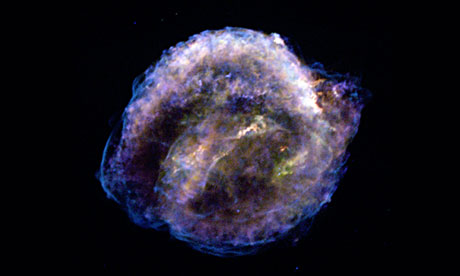

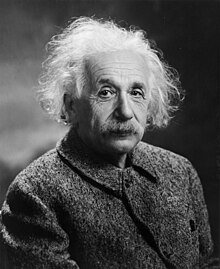












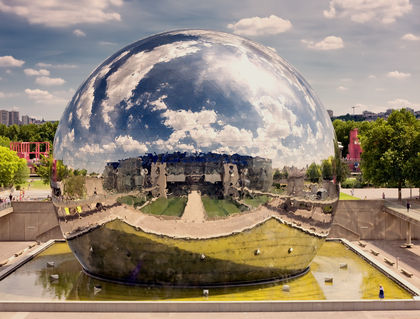

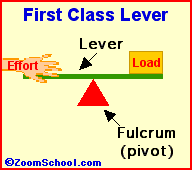
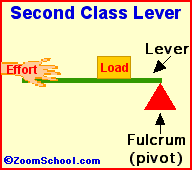
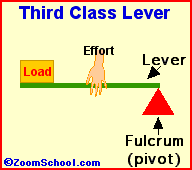
 Leo
Hendrik Baekeland (November 14, 1863 - February 23, 1944) was a
Belgian-born American chemist who invented Velox photographic paper
(1893) and Bakelite (1907), an inexpensive, nonflammable, versatile, and
very popular plastic.
For more information on Baekeland, click here.
Leo
Hendrik Baekeland (November 14, 1863 - February 23, 1944) was a
Belgian-born American chemist who invented Velox photographic paper
(1893) and Bakelite (1907), an inexpensive, nonflammable, versatile, and
very popular plastic.
For more information on Baekeland, click here. The
laboratory Bunsen burner was invented by Robert Wilhelm Bunsen in 1855.
Bunsen (1811-1899) was a German chemist and teacher. He invented the
Bunsen burner for his research in isolating chemical substances - it has
a high-intensity, non-luminous flame that does not interfere with the
colored flame emitted by chemicals being tested.
For more information on Bunsen, click here.
The
laboratory Bunsen burner was invented by Robert Wilhelm Bunsen in 1855.
Bunsen (1811-1899) was a German chemist and teacher. He invented the
Bunsen burner for his research in isolating chemical substances - it has
a high-intensity, non-luminous flame that does not interfere with the
colored flame emitted by chemicals being tested.
For more information on Bunsen, click here.